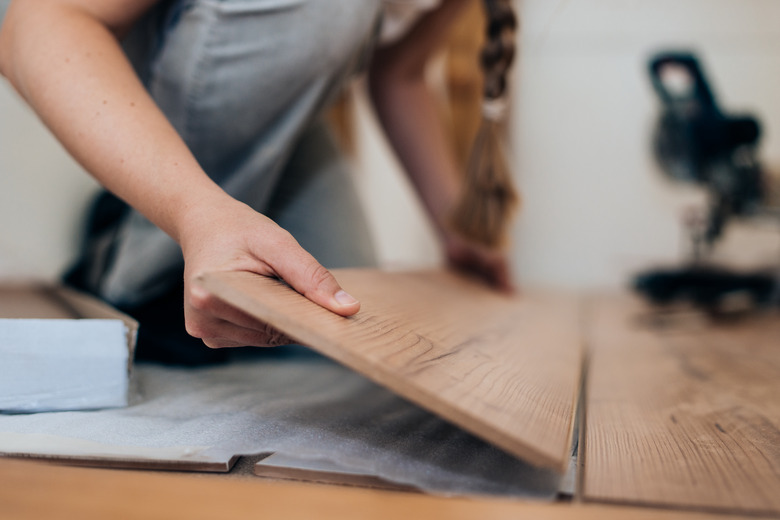Why Is A Laminate Floor Lifting?
We may receive a commission on purchases made from links.
Laminate flooring that feels bouncy or is lifting in areas is not only ugly but it can be a safety issue. Whether it's spilled water on the laminate floor, underlying moisture, or improper installation, resolving the issue quickly can save the entire expanse of flooring. If you have a rising laminate flooring problem or planks that are lifting, buckling, or separating, there are a few ways to find and fix the underlying issue.
Proper Acclimation to Decrease Lifting
Proper Acclimation to Decrease Lifting
Before the laminate planks are laid out in a pattern over the subfloor in your living space, they need to be acclimated. If the laminate flooring wasn't adequately acclimated before installation, this can cause gaps between each board, lifting around the edges, or buckling along the entire area.
The laminate flooring should be left in the room where it is intended to be installed for at least 24 and up to 72 hours in advance. Be sure to buy one or two extra packages of the planks in case repairs are needed in the future.
Expansion Gap for Installation
Expansion Gap for Installation
The expansion gap allows airflow to circulate among the laminate planks and cuts down on moisture finding its way between and underneath the individual planks. It allows for the natural swelling and shrinking that occurs with temperature and humidity changes in the room.
Laminate flooring needs an expansion gap that is correlated to the thickness of the planks. Give a 1/2 inch expansion gap around the perimeter for laminate flooring that is 1/2 inch thick. Sturdy exterior foundation walls in particular need the gap because they aren't as conducive to expansion along the flooring as interior walls can be.
Humidity and Moisture
Humidity and Moisture
Laminate is durable, but it can't stand up to long exposure to moisture. Planks that are lifting near windows, entryways, or vents or over pipes beneath the subfloor may be experiencing a high moisture or humidity level. Find the moisture source and resolve the issue before attempting to fix the faulty laminate planks.
When cleaning the laminate flooring, don't allow water or cleaning solutions to sit on the surface. The water can seep into the joints and seams between the planks and cause them to warp, lift, or separate. Generally, a laminate floor cleaner is a better choice for cleaning floors; spray it on and wipe it off.
Pets may also find that discreetly urinating on the laminate flooring can escape your attention. The buildup of the moisture of this favored potty spot by your pet can become a big problem. Put down puppy pads if you have found a spot that your pet prefers to use as an indoor potty. Give the entire floor a good once over daily to ensure that the pet hasn't moved on to drier areas.
Fixing Lifting Laminate
Fixing Lifting Laminate
If the pet and moisture issue has been resolved and the lifting continues, then you may need to call in a professional. However, you can try to fix laminate floor lifting issues by removing the baseboards, taking out the too-tight laminate planks pressing against the wall, and trimming the edges to relieve the pressure. Reinstall the planks and tap them back in place, moving along the floor patiently until the planks are secured.
Laminate planks in the center of the room that have warped or are otherwise damaged should be replaced. Remove the closest baseboard that parallels the planks and damaged area. Remove the rows of planks until you reach the damaged area. Take out all the damaged laminate planks and replace them with new, fault-free planks, which can be locked and tapped into place.
Leave at least 1/2 inch between the planks and wall to allow for future expansion. Reinstall the baseboards using a nail set to indent the finishing nails. A dab of wood filler and a little paint finishes the job.
